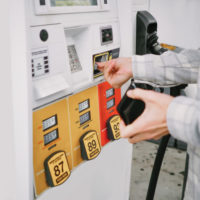
Pump prices are ticking down in most states, driven by crude oil prices that fell to their lowest level in more a year and a half. For the week, the national average for regular unleaded dips three cents to $3.44 a gallon. The Oregon average slips three cents to $3.88.

“Crude oil prices plunged to $66 per barrel last week, the lowest price since August 2021. Markets continue to react to concerns about the global banking sector, and fears of another financial collapse similar to what drove the 2008 recession,” says Marie Dodds, public affairs director for AAA Oregon/Idaho.
Crude oil is trading around $69 today compared to $71 a week ago and $112 a year ago. In February, West Texas Intermediate ranged between about $73 and $80 per barrel. In January, WTI ranged between about $73 and $82 bbl. Crude reached recent highs of $123.70 on March 8, 2022, shortly after the Russian invasion of Ukraine, and $122.11 per barrel on June 8, 2022. The all-time high for WTI crude oil is $147.27 in July 2008.
Crude oil prices tend to decrease in response to negative economic news, such as fears about the banking industry, because countries with faltering economies tend to consume less oil. Crude prices tend to increase in response to positive economic news, as growing, thriving economies tend to consume more oil. Crude prices also climb when geo-political events have the potential to disrupt supply. Crude prices rose dramatically leading up to and in the first few months of Russia’s invasion of Ukraine, and gas prices also skyrocketed. Russia is one of the world’s top oil producers and its involvement in a war causes market volatility, and sanctions imposed on Russia by the U.S. and other western nations resulted in tighter global oil supplies. Oil supplies were already tight around the world as demand for oil increased as pandemic restrictions eased.
Crude oil is the main ingredient in gasoline and diesel, so pump prices are impacted by crude prices on the global markets. On average, about 56% of what we pay for in a gallon of gasoline is for the price of crude oil, 20% is refining, 11% distribution and marketing, and 14% are taxes, according to the U.S. Energy Information Administration.
A factor putting upward pressure on pump prices this time of year is the seasonal switch to summer-blend fuel. California has an April 1 deadline to switch to summer-blend fuel, while the federally mandated deadline is May 1. The West Coast region often sees prices climb earlier than other parts of the country because of that earlier California deadline,” says Dodds. “Refinery maintenance in Washington and Northern California could soon tighten supply.”
More info on summer- and winter-blend gasoline can be found at the EPA website.
Demand for gasoline in the U.S. demand increased slightly from 8.56 to 8.59 million b/d for the week ending March 10. This compares to 8.94 million b/d a year ago. Meanwhile, total domestic gasoline stocks decreased by 2.1 million bbl to 236 million bbl last week. Increasing demand amid tighter supply would typically push pump prices higher; however, lower oil prices have countered this effect. If crude oil prices keep falling, drivers could see pump prices decline.















